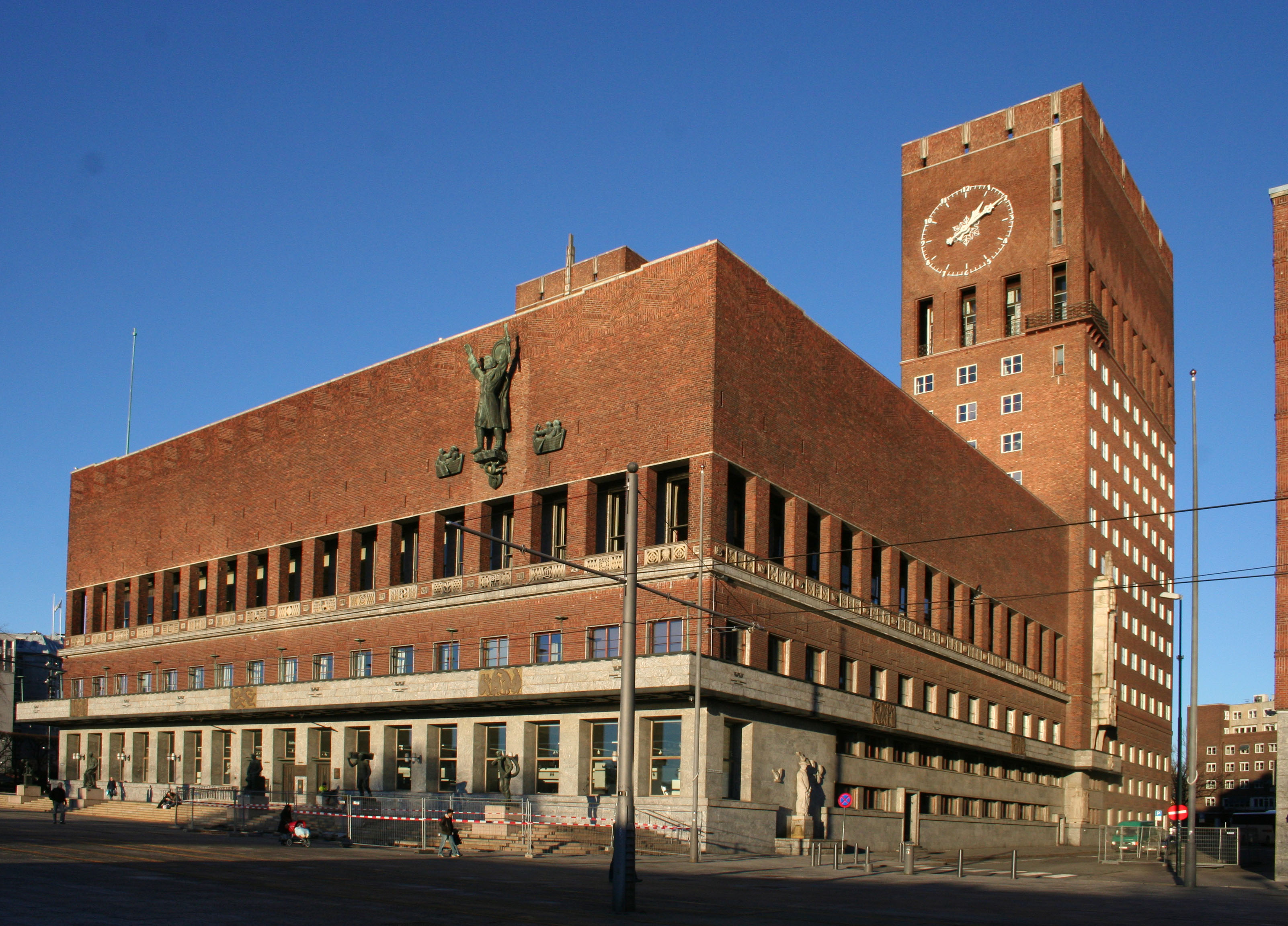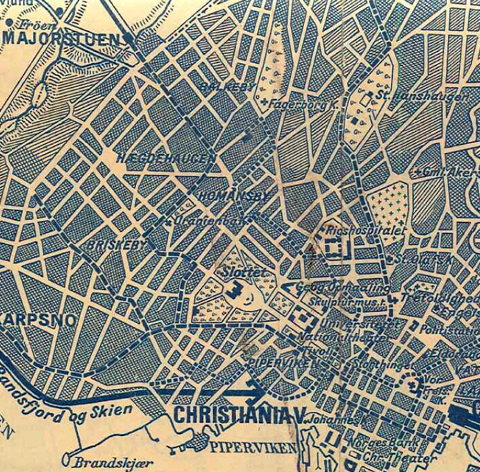|
Uranienborg, Oslo
Uranienborg is a neighborhood in the borough of Frogner in Oslo, Norway. History Originally a rural area in the former municipality Aker, it was incorporated into the city of Christiania (later Oslo) in 1859. The property used to have a wonderful view, and it was therefore named after the famous observatory Uranienborg at the island of Ven. It received public transport with the Briskeby Line. From 1988 to 2004 it formed the borough ''Uranienborg-Majorstuen'' together with Majorstuen; in 2004 it was incorporated into Frogner borough. It includes Roald Amundsen's Home, also known as "Uranienborg", the home of the polar explorer from 1908, before his successful South Pole expedition, until his death in 1928. The home is now a historic site and tourist attraction. Uranienborg Park Uranienborg is the site of Uranienborgparken, the park where Uranienborg Church is located. The park contains a bronze statue of the Lutheran church reformer Hans Nielsen Hauge. The church is note ... [...More Info...] [...Related Items...] OR: [Wikipedia] [Google] [Baidu] |
Uranienborg Map 1900
Uranienborg can be: *Uranienborg, Norway *Uraniborg Uraniborg ( da, Uranienborg, sv, Uraniborg) was a Danish astronomical observatory and alchemy laboratory established and operated by Tycho Brahe. It was built on Hven, an island in the Øresund between Zealand and Scania, Sweden, which was ... (or ''Uranienborg''), the astronomical/astrological observatory of Tycho Brahe on the island of Hven. {{Geodis ... [...More Info...] [...Related Items...] OR: [Wikipedia] [Google] [Baidu] |
Majorstuen
Majorstuen is a particularly affluent neighbourhood in the Frogner borough in the inner part of Oslo, Norway. Majorstuen is known for its vibrant downtown and especially its shopping area. The area has several elegant townhouses c. 1880–1890. The area is also an important public transport junction in Oslo, where all metro lines, three tram lines and five bus lines operate. It is served by Majorstuen station. The name The neighborhood was named after a well-known public house that was located on the east side of Sørkedalsveien. Dating from the 1700s, the house was named for Captain Michael Wilhelm von Sundt (1679–1753). The last element is the finite form of ''stue'' 'cabin, house with a single room'. There has long been a disagreement about the forms ''Majorstuen'' and ''Majorstua'': ''stuen'' is the articulated form when ''stue'' is treated as a masculine, and ''stua'' is the articulated form when it is treated as a feminine noun. The original pronunciation was ''-stua'' (No ... [...More Info...] [...Related Items...] OR: [Wikipedia] [Google] [Baidu] |
Arnstein Arneberg
Arnstein Rynning Arneberg (6 July 1882 – 9 June 1961) was a Norwegian architect. He was active professionally for 50 years and is often considered the leading architect in Norway of his time. Personal life Arnstein Rynning Arneberg was born in Fredrikshald (now Halden) as a son of factory manager Mauritz Otto Edward Arneberg (1845–1913) and Hermione Nicoline Mathilde Rynning (1858–1944). Arneberg grew up in Lysaker in Oslo. In 1910 he married Aagot Kielland Skavlan (1888–1960), a daughter of professor Olaf Skavlan. After the marriage was dissolved in 1923 Arneberg married Eva Elisabeth Reimers (1901–1987). A daughter from the first marriage, ceramicist Gro Skavlan Arneberg, was married to economist and politician Egil Lothe. Education From 1899–1902, he was a student at the Royal Drawing School, now the Norwegian National Academy of Craft and Art Industry in Oslo. Arneberg began his education of the architect with employment as assistant to the architect, A ... [...More Info...] [...Related Items...] OR: [Wikipedia] [Google] [Baidu] |
Hans Nielsen Hauge
Hans Nielsen Hauge (3 April 1771 – 29 March 1824) was a 19th-century Norwegian Lutheran lay minister, spiritual leader, business entrepreneur, social reformer and author. He led a noted Pietism revival known as the Haugean movement. Hauge is also considered to have been influential in the early industrialization of Norway. Biography Hans Nielsen Hauge was born the fifth of ten children in his ancestral farm of Hauge at Rolvsøy (''Hauge på Rolvsøy'') in the county of Østfold. His father was Niels Mikkelsen Evenrød (1732–1813) and mother Maria Olsdatter Hauge (1735–1811). He had a poor and otherwise ordinary youth until 5 April 1796, when he received his "spiritual baptism" in a field near his farm. Within two months, he had founded a revival movement in his own community, written a book, and decided to take his mission on the road. He wrote a series of books in his lifetime. In a total of 18 years, he published 33 books. Estimates are that 100,000 Norwegians read one or ... [...More Info...] [...Related Items...] OR: [Wikipedia] [Google] [Baidu] |
Uranienborg Church
Uranienborg church is a parish church in Oslo, Norway. The church is situated in the neighborhood of Uranienborg, next to Uranienborg Park behind the Royal Palace. Both the church and Uranienborg school just below were constructed in 1886. The church was built of brick and was the most expensive of all churches erected within Christiania (now Oslo) at this time. The church was designed by Balthazar Lange who was city architect in Christiania from 1898 to 1920. It was consecrated on 22 December 1886. The building is given a Gothic feel and was decorated with stained glass by the artist Emanuel Vigeland. The church was initially decorated with frescoes by Enevold Thømt, which have since been lost. In 1930 the interior received its present form by architect Arnstein Arneberg Arnstein Rynning Arneberg (6 July 1882 – 9 June 1961) was a Norwegian architect. He was active professionally for 50 years and is often considered the leading architect in Norway of his time. P ... [...More Info...] [...Related Items...] OR: [Wikipedia] [Google] [Baidu] |
Roald Amundsen's Home
Roald is a village in Giske Municipality in Møre og Romsdal county, Norway. The village is located on the northern part of the island Vigra. Roald is located about north of the city centre of Ålesund. It is connected to the mainland via two undersea tunnels which opened in 1987 (and was extensively upgraded in 2008). Ålesund Airport, Vigra is located south of the village of Roald. Vigra Church is also located a short distance south of Roald. The village has a population (2018) of 943 and a population density of . The village of Roald was the administrative centre of the old Roald Municipality that existed from 1890 until its dissolution in 1964. The former municipality was later renamed Vigra Municipality. Since 1964, it has been a part of Giske Municipality Giske is an island municipality in Møre og Romsdal county, Norway. The municipality lies north-northwest of the town of Ålesund in the traditional district of Sunnmøre. The municipal centre is Valderhaug ... [...More Info...] [...Related Items...] OR: [Wikipedia] [Google] [Baidu] |
Store Norske Leksikon
The ''Great Norwegian Encyclopedia'' ( no, Store Norske Leksikon, abbreviated ''SNL''), is a Norwegian-language online encyclopedia. The online encyclopedia is among the most-read Norwegian published sites, with more than two million unique visitors per month. Paper editions 1978–2007 The ''SNL'' was created in 1978, when the two publishing houses Aschehoug and Gyldendal merged their encyclopedias and created the company Kunnskapsforlaget. Up until 1978 the two publishing houses of Aschehoug and Gyldendal, Norway's two largest, had published ' and ', respectively. The respective first editions were published in 1907–1913 (Aschehoug) and 1933–1934 (Gyldendal). The slump in sales for paper-based encyclopedias around the turn of the 21st century hit Kunnskapsforlaget hard, but a fourth edition of the paper encyclopedia was secured by a grant of ten million Norwegian kroner from the foundation Fritt Ord in 2003. The fourth edition consisted of 16 volumes, a t ... [...More Info...] [...Related Items...] OR: [Wikipedia] [Google] [Baidu] |
Briskeby Line
The Briskeby Line ( no, Briskebylinjen) is a line of the Oslo Tramway in Norway. It runs westwards from Jernbanetorget in the city center, passing through the neighborhoods of Briskeby and Uranienborg before reaching its terminus at Majorstuen. The section from Jernbanetorget to Inkognitogata is shared with the Skøyen Line; on this section it connects with the important transport hub Nationatheatret. This part is variously served by route 11, 12 and 13. From the Inkognitogata stop, the line moves through the residential areas around the Royal Palace, in the streets named Riddervolds gate, Briskebyveien, Holtegata and Bogstadveien. The part of the line in Bogstadveien from Majorstuen to Rosenborg is also served by route 19, which operates the Homansbyen Line. When Kristiania Elektriske Sporvei opened the line on 3 March 1894, it was the first electric tramway in Scandinavia. Originally the line ran through Parkveien instead of Inkognitogata and was mostly single track. The trac ... [...More Info...] [...Related Items...] OR: [Wikipedia] [Google] [Baidu] |
Ven, Sweden
Ven ( da, Hven, older Swedish spelling Hven) is a small Swedish island in the Øresund strait, between Scania and Zealand (Denmark). It is part of Landskrona Municipality, Scania County. The island has 371 inhabitants and an area of . During the 1930s, the population was at its peak, with approximately 1,300 inhabitants. There are four villages on the island: Bäckviken, Tuna By, Norreborg and Kyrkbacken. The island is best known as the location of Tycho Brahe's 16th-century observatories. Geography Unlike the relatively flat islands Amager and Saltholm, Ven rises from the Öresund with steep and dramatic coastlines. This makes the island easily visible from both Zealand and Scania, as well as from all ships that sail in and out of the Baltic Sea. Its southern coastline resembles the White Cliffs of Dover, Møns Klint and Cape Arkona, but owing to a higher degree of sand and lower of chalk, the cliffs are more yellow than white. Almost the entire island consists of a flat agri ... [...More Info...] [...Related Items...] OR: [Wikipedia] [Google] [Baidu] |
Uraniborg
Uraniborg ( da, Uranienborg, sv, Uraniborg) was a Danish astronomical observatory and alchemy laboratory established and operated by Tycho Brahe. It was built on Hven, an island in the Øresund between Zealand and Scania, Sweden, which was part of Denmark at the time. It was expanded with the underground facility Stjerneborg ( sv, Stjärneborg) on an adjacent site. Brahe also innovated and invented many precision instruments which he used to carry out his studies in the observatory. Research was done in the fields of astronomy, alchemy, and meteorology by Tycho and his assistants. Brahe abandoned Uraniborg and Stjerneborg in 1597 after he fell out of favour with the Danish king, Christian IV of Denmark; Brahe left the country, and the institution was destroyed in 1601 after his death. Hven was later lost to Sweden, and the Rundetårn (Round Tower) in Copenhagen was inaugurated in 1642 as a replacement for Uraniborg's astronomical functions. Restoration of Uraniborg's ground ... [...More Info...] [...Related Items...] OR: [Wikipedia] [Google] [Baidu] |






